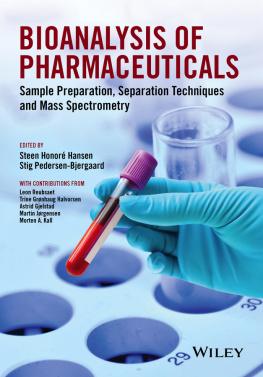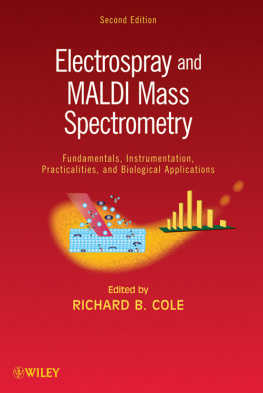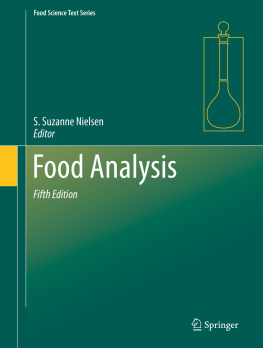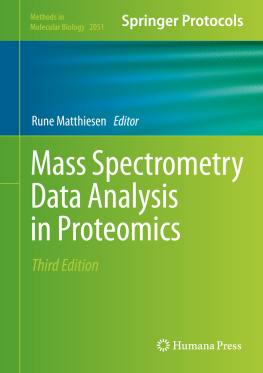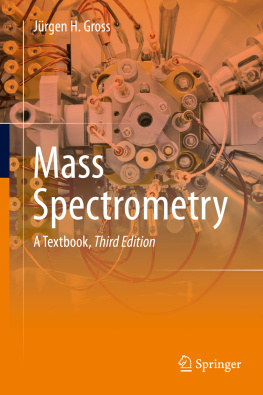
This edition first published 2015
2015 John Wiley & Sons, Ltd
Registered office
John Wiley & Sons Ltd, The Atrium, Southern Gate, Chichester, West Sussex, PO19 8SQ, United Kingdom
For details of our global editorial offices, for customer services and for information about how to apply for permission to reuse the copyright material in this book please see our website at www.wiley.com.
The right of the author to be identified as the author of this work has been asserted in accordance with the Copyright, Designs and Patents Act 1988.
All rights reserved. No part of this publication may be reproduced, stored in a retrieval system, or transmitted, in any form or by any means, electronic, mechanical, photocopying, recording or otherwise, except as permitted by the UK Copyright, Designs and Patents Act 1988, without the prior permission of the publisher.
Wiley also publishes its books in a variety of electronic formats. Some content that appears in print may not be available in electronic books.
Designations used by companies to distinguish their products are often claimed as trademarks. All brand names and product names used in this book are trade names, service marks, trademarks or registered trademarks of their respective owners. The publisher is not associated with any product or vendor mentioned in this book.
Limit of Liability/Disclaimer of Warranty: While the publisher and author have used their best efforts in preparing this book, they make no representations or warranties with respect to the accuracy or completeness of the contents of this book and specifically disclaim any implied warranties of merchantability or fitness for a particular purpose. It is sold on the understanding that the publisher is not engaged in rendering professional services and neither the publisher nor the author shall be liable for damages arising herefrom. If professional advice or other expert assistance is required, the services of a competent professional should be sought.
The advice and strategies contained herein may not be suitable for every situation. In view of ongoing research, equipment modifications, changes in governmental regulations, and the constant flow of information relating to the use of experimental reagents, equipment, and devices, the reader is urged to review and evaluate the information provided in the package insert or instructions for each chemical, piece of equipment, reagent, or device for, among other things, any changes in the instructions or indication of usage and for added warnings and precautions. The fact that an organization or Website is referred to in this work as a citation and/or a potential source of further information does not mean that the author or the publisher endorses the information the organization or Website may provide or recommendations it may make. Further, readers should be aware that Internet Websites listed in this work may have changed or disappeared between when this work was written and when it is read. No warranty may be created or extended by any promotional statements for this work. Neither the publisher nor the author shall be liable for any damages arising herefrom.
Library of Congress Cataloging-in-Publication Data applied for.
A catalogue record for this book is available from the British Library.
Hardback: 9781118716816
Paperback: 9781118716823
Contributing Authors
- Leon Reubsaet
- School of Pharmacy, University of Oslo, Norway
- Trine Grnhaug Halvorsen
- School of Pharmacy, University of Oslo, Norway
- Astrid Gjelstad
- School of Pharmacy, University of Oslo, Norway
- Martin Jrgensen
- Drug ADME Research, H. Lundbeck AS, Denmark
- Morten A. Kall
- Department of Bioanalysis, H. Lundbeck AS, Denmark
Preface
The field of bioanalysis is very broad, complex, and challenging, and therefore writing an introductory textbook in this field is a difficult task. From our point of view, a good introductory student textbook is limited in the number of pages, discusses the different principles and concepts clearly and comprehensively, and contains many relevant and educational examples. Given these criteria, we have narrowed our focus on bioanalysis. First, we have limited our discussion to the chemical analysis of pharmaceuticals that are present in biological fluids. The focus is directed toward substances that are administered as human drugs, including low-molecular drug substances, peptides, and proteins. Endogenous substances are not discussed. Second, the discussion of different analytical methods has been limited to those based on chromatography and mass spectrometry. Certainly, different immunological methods are also used, but teaching all the principles and applications of chromatographic, mass spectrometric, and immunological methods was too ambitious to meet our criteria for a good introductory student textbook.
The present book is the first introductory student textbook on chromatography and mass spectrometry of pharmaceuticals present in biological fluids, highlighting an educational presentation of the principles, concepts, and applications. We discuss the chemical structures and properties of low- and high-molecular pharmaceuticals, the different types of biological samples and fluids that are used, how to prepare the samples by extraction, and how to perform the final analytical measurement by use of chromatography and mass spectrometry. Many examples illustrate the theory and applications, and the examples discuss all practical aspects, including the calculations. Thus, in this textbook, you will even learn how to convert the numbers recorded by the instrument to the concentration of the actual drug substances in the biological sample.
Bioanalysis is an applied scientific discipline, and this represents another challenge in terms of writing an introductory student textbook. University professors are well trained in teaching the basic principles. However, bioanalysis is mainly performed outside the university by researchers in the pharmaceutical industry, in contract laboratories, and in hospital laboratories. Thus, the researchers outside the university have the best overview of the most important applications and techniques in practical use. To address this, both university professors and researchers from the pharmaceutical industry have authored this textbook. Hopefully, this has resulted in a textbook that reflects bioanalysis in the year 2015. The authors have been in close contact with colleagues for advice, and we would especially like to thank Elisabeth Leere iestad for fruitful discussions.
The present textbook is intended for the fourth- or fifth-year university pharmacy or chemistry student. Reading the textbook requires basic knowledge in organic chemistry and biochemistry, as well as in analytical chemistry. With respect to the latter, we have given priority to discuss the analytical techniques in a fundamental and educational frame, and detailed knowledge on instrumental analytical methods is not required prior to reading this textbook.
Good luck with the reading!
Oslo and Copenhagen, June 2014
Steen Honor Hansen, Stig Pedersen-Bjergaard, Leon Reubsaet, Astrid Gjelstad,
Trine Grnhaug Halvorsen, Martin Jrgensen, and Morten A. Kall
|
 | Readers can access PowerPoint slides of all figures at http://booksupport.wiley.com |
Next page
